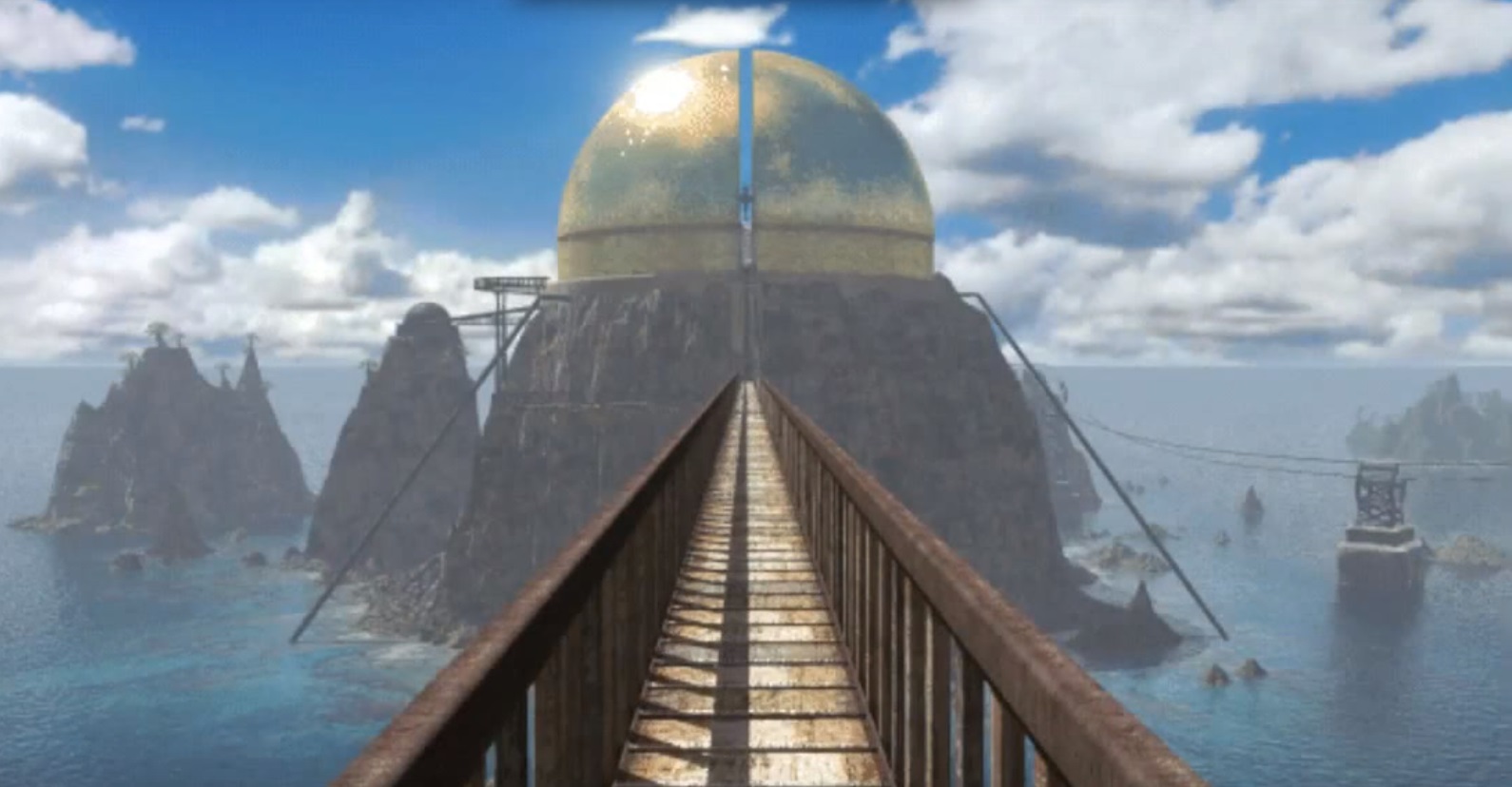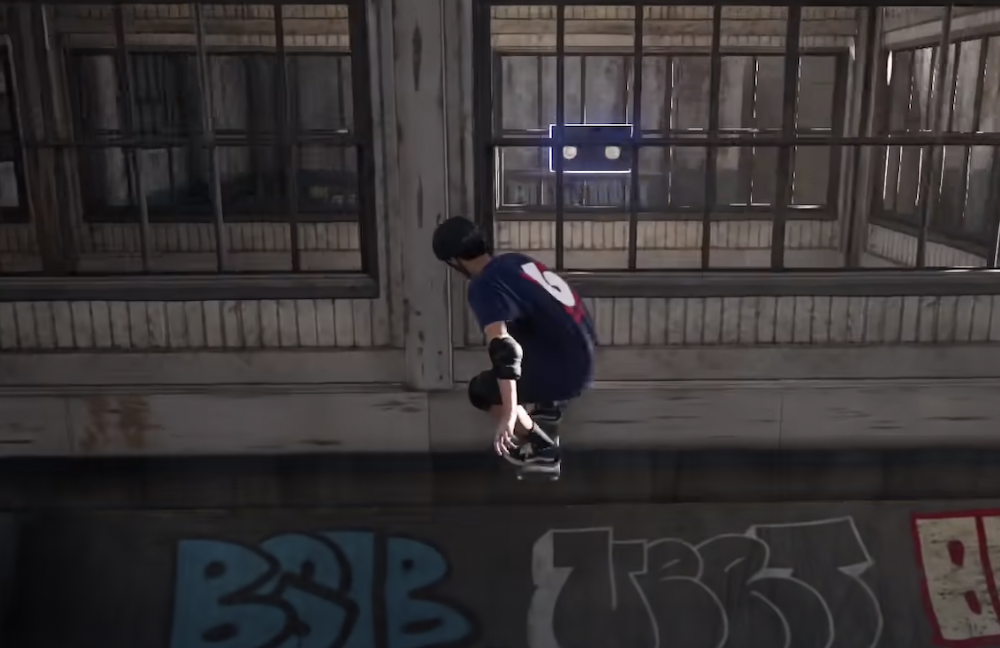Craft
How Playing “Myst” Taught Me to Write Fiction
The classic puzzle game, and its sequel "Riven," showed me the pleasures of immersion and suggestion

In the 1990s I was a lonely, nerdy girl writer. Nobody else I knew was simultaneously obsessed with learning HTML and parsing the sentences of F. Scott Fitzgerald. This meant I spent a lot of time alone, curled in my chair reading—but I spent nearly as many hours clicking and tapping on my mother’s beige, boxy computer, playing computer games. I liked puzzle games, and the bigger the world to explore, the better. In particular, I was a fan of Cyan’s original island-linking puzzler, Myst. For those growing up in the ‘90s, just discovering the engrossing world of first-person computer games, Myst and its sequel, Riven, are a touchstone. The pop culture we absorb and obsess over has a funny way of shaping us when we’re not noticing. I can only see a couple of decades out how Myst and Riven drove my own fixation on negative space in narrative, and showed me how it’s possible to tell a story in an empty room.
Myst and Riven were revolutionary games for their time, and are still cult favorites today. Unlike the fast-moving, pixelly platformers of this era, Myst and Riven relied almost entirely on clicking through still images of painstakingly drawn natural environments, making the most of limited ‘90s computer processors. You move through a static world, like flipping through one matte painting after another. You open steam valves and record musical note codes and collect keys. You don’t know what might be significant to solve a different puzzle elsewhere on the island, and so you keep a notebook open by your keyboard, and scribble down strange symbols carved on the walls, or the number five popping up in odd places. Beneath the codes and puzzles and labyrinths is a surprisingly complex story, full of patricide, family rivalries, colonialism and Apocalypse Now-like riffs on Godhood and exploitation. In Riven, a mad genius capable of designing worlds through the writing of books has been exiled in one of his own worlds by his son, who believes him twisted with power. But the father has turned the local inhabitants of the world into his slaves, posing as a god of the realm, and is exploiting them through fear and violence. It’s your job to enter the dangerous, unstable world he’s running and trap him, helping the rebels wall him off in a different book that is secretly a prison.
It was a kind of playground for wandering, for putting together the clues of who had once lived here and what stories they had left behind.
Whenever I decided to pop one of the five Riven CD’s into my mom’s CD-ROM drive and start up a game that seemed to have no ending, I’d fall into an intense, quiet, and focused state. My mother’s little office darkened and quieted around me when the fuzzy blue-gray graphics of the Cyan logo resolved itself. The setting was a sunny, semi-tropical world that seemed only recently abandoned, strewn with the debris of a hastily departed people. It was a kind of playground for wandering, for putting together the clues of who had once lived here and what stories they had left behind. The quiet, contemplative mindset I could find when I leaned close to the bright computer screen, ruining my eyes, moving image by image through the deserted world felt like meditation. It also felt like the kind of focused, curious, imaginative journey that I went on when I was trying to write stories of my own, solving the puzzles of sentences, writing with half creation, half discovery.
The makers of Riven and other games of the era were fighting a constant and cleverly-waged war against the limitations of hard drive and RAM space; while CDs could hold an astonishing amount of data compared to previous disks, the speed and processing power of personal computers at the time kept most of the images static and the worlds tightly contained. Like Main Street in the movie Pleasantville, which loops right back onto itself after a few blocks, the worlds of ‘90s computer games had to come up against walls, or cleverly loop on themselves to give the illusion of space. In Riven, the island motif worked because you could plausibly be trapped on these small land masses, surrounded by perfect cyan-blue seas. The gimmick of Riven— that these island worlds were in fact, written creations by a madman master creator, bound by his own imaginative limits — suited the limitations of their technology well.
The puzzles of Riven were legendarily fiendish. While Myst was solvable, given enough time and diligence, some of the puzzles in Riven were outlandishly obscure. An example: you had to find where a dome-shaped stone was located on each of five islands, then compare it to a hidden topographical map of the islands, then place colored marbles precisely on a 50×50 grid representing the domes. Spin a revolving chamber five times and nothing would happen—but spin it back once and you’d find a hidden door. Remember to extend a walkway when you were on the near side of a bridge, because an hour later on another island, you wouldn’t be able to make it back. Boil water in a chamber to make a floor panel rise, then drain the water, then lower the panel again, and you’d find a secret ladder. Colors were linked with animals in an exact order. Doors hid other doors. Throwing a hidden switch would result in turning off a fan you encountered hours later, enabling you to climb through an air duct. If you pushed a button that appeared to do nothing at the very beginning of the game, you’d be able to finish; if you pushed it fruitlessly an even number of times, it would do nothing at the end, and you’d be unable to win. Rotating chambers with shifting doorways, and locked prisons with sound pattern codes, confounded my ten-year-old brain. I never finished the game on my own power. I had to resort to cycling through the few intriguing zones I could reach, somehow soothed by the realistic lapping water and the cranks and pulleys and levers I could turn off and on again, not knowing their effect.
I sought it not just as a game to play, but a full-body experience.
Years later, I finally bought a guide book to the game, blew the dust off the CDs (they remarkably still worked), and played all the way through, following the walkthrough as the book guided me. It was exhilarating to finally see how the puzzles worked, and to open new rooms I had not noticed, but it was also disappointing, as it always is when you’re given the answer to a riddle or the secret behind a magic trick. Still, the pleasure of returning to that world was intense. My nostalgia for the experience of playing Riven is wrapped up in the sensory experience of sliding the CDs into that fragile ejecting tray; listening to the hum and whir of the CD starting up; the fact that you had to switch CDs every time you arrived on a new island, one of five, and the buggy way the computer would jerk and freeze as it labored to load a video clip. I liked to imagine myself into the jumpy digital rooms and islands and underground tunnels. I pretended I was an explorer really visiting these places. When characters spoke to me, saying, “You must have come to help us,” I took my role seriously. The experience of immersion, which I talk to my creative writing students about, can be achieved with such paltry tricks: a stranger who seems to know you, or an entreaty, a riddle begging to be solved. An open door, with a light on in the room beyond; a winding pathway through the trees. There were other islands on the horizon of the game, and locked doors I couldn’t enter, and it made me want to visit the world again and again. I sought it not just as a game to play, but a full-body experience, a deep, entrancing pleasure to place myself in another person’s puzzle.
The idea of traveling through an uninhabited world, deciphering its clues, has since been explored in many games, from the clearly Myst-inspired puzzler The Witness to the poignant coming-out story in an empty house suggested by Gone Home and the solitary, woodsy wanderings of Firewatch, where you’re stationed at a forest watch tower. In these games, you discover the rules of a world by traveling through empty rooms, picking up objects, reading through the scattered notes left on a desk, discovering the signs of struggle or heartbreak in mementoes stashed under a bed. NPCs (non-player characters) speak enigmatically of the events that happened before you arrived; it’s up to you to piece together what has happened here.
The anonymous nature of the first person gameplay lets you step into the world and imagine the hypotheticals.
You’re a cipher, an invisible first-person observer with all the possibilities of a fictional character but none of the locked-in personality. The anonymous nature of the first person gameplay lets you step into the world and imagine the hypotheticals, making choices and focusing on what carefully laid details you find intriguing. In Gone Home, there’s a sense of dread as you poke through the dark corridors and abandoned rooms of your family’s home; you keep expecting a zombie to jump out or a ghost to drift by. But instead, through the discovery of journal entries and bus tickets, you realize your family is in the middle of a quiet crisis. Your younger sister has come out to your parents, and in their cold reception to the news, she’s decided to run away. By putting the first person observer right in the middle of this drama, gamers are encouraged to empathize with a problem and a character rarely depicted in the world of video games. The problem is yours. It’s up to you how to feel about it, but you’ll have to live in the world for a little while and experience it as your own.
I didn’t always manage to finish these games on my own steam, but it didn’t really matter; the pleasure is in the exploration, not the win. You’re yourself, stepping through a looking-glass.
Sometimes, characters you might encounter later will know who you are, and pull you into their schemes. In others, you’re anyone and no one, and your job is to witness and discover, and eventually draw your own conclusions of sympathy and allegiance. In Riven, you learn a code by stumbling into a schoolhouse and playing a children’s hangman’s game, turning a crank and watching a toy figure dangle over a shark and lower itself a certain number of clicks for each turn. Then you put two and two together, and realize the children’s game is a replica of the strange gallows structure you’ve been circling outside, and that people are being executed on the island using just this method. No one tells you what to think or how to feel. The story is all suggestion and silence.
This process of discovery through negative space, through unanswered questions and objects that speak, has had a powerful effect on my own writing. I’ve written many stories that involved people passing through empty rooms, sorting through objects left behind, hovering in doorways or leaning in on the edges of conversations, trying to divine the secrets of the people who are living their lives just out of the story’s frame. I—and my characters—are fascinated by the clues and hints and misdirections that suggest conflict, desire, a life being lived in privacy. My favorite fiction offers lives up to the reader in glimpses.
We are detectives, prowling around the edges of each others’ lives.
There’s an ethical and political dimension to spying and eavesdropping, picking up the story through suggestions and clues, that I only picked up on when I revisited Riven this year. When we try to inhabit the lives of other characters, the process is necessarily incomplete; we can’t perfectly slip into the experience of others, and must acknowledge the partial, fragmentary nature of our disappearing. Authors know this. In the recent furious arguments in lit circles about appropriation, #ownvoices, or the difficult question of who is entitled to tell whose story, that problem is beating at the center of every debate. Ultimately I think suggestion and limitation might be the only way to honestly show the experience of others—to acknowledge that we are detectives, prowling around the edges of each others’ lives.
Playing Riven, I used to perch on the edge of my mother’s computer chair and crane into the screen as though I could see deeper into the corners of the digital rooms, looking for easter egg details left, lovingly, by the game’s creators. I felt myself entering a trance of discovery. Surely there were more secrets—locked rooms and hidden basement stairs, pathways through the cricket-keening forest, other houses that would open to my knock. I spent so many hours of my childhood in this quiet, thrilling discovery mode. The games were not at all the flashing lights and shoot-em-ups that non-gamers sometimes imagine. They were an escape, a place to explore the boundaries of a fictional world, a daydream.
The disappointment of a computer game is ultimately its finite nature; with its limitations of how much data can fit on five CD-ROMS, only so much world could exist. Every gamer has encountered and pushed up against those invisible walls in the edges of a game: arcade players of Donkey Kong striving for the kill screen, or players of Mario or Zelda leaping into the voids surrounding their colorful land masses, or running into blank barriers of pixels, hoping for a moment that they might punch through to the other side of the universe, and see it continue on. The land beyond those digital boundaries is mysterious, intriguing, no-space.
As a young writer, I returned to the game, and still return to games like it as an adult, old and anxious with a baby of my own to care for during a pandemic. I’m temporarily soothed by the balm of digital immersion. The quiet thrill of fiction—and game life— is to get a glimpse into a world that exists without you, and yet allows you to enter and participate, like a virtual trip through the spaces that we’re now prevented from entering. I can imagine games being created during this quarantine period — quiet walks through a grocery store, jostling among crowds at a concert or stadium, riding a train. We’re seeking an escape into normal life as an exotic luxury now. I can imagine scores of lonely people settling into the screen-lit darkness of their living rooms, playing virtual lives, exploring normalcy, living its forgotten pleasures.








